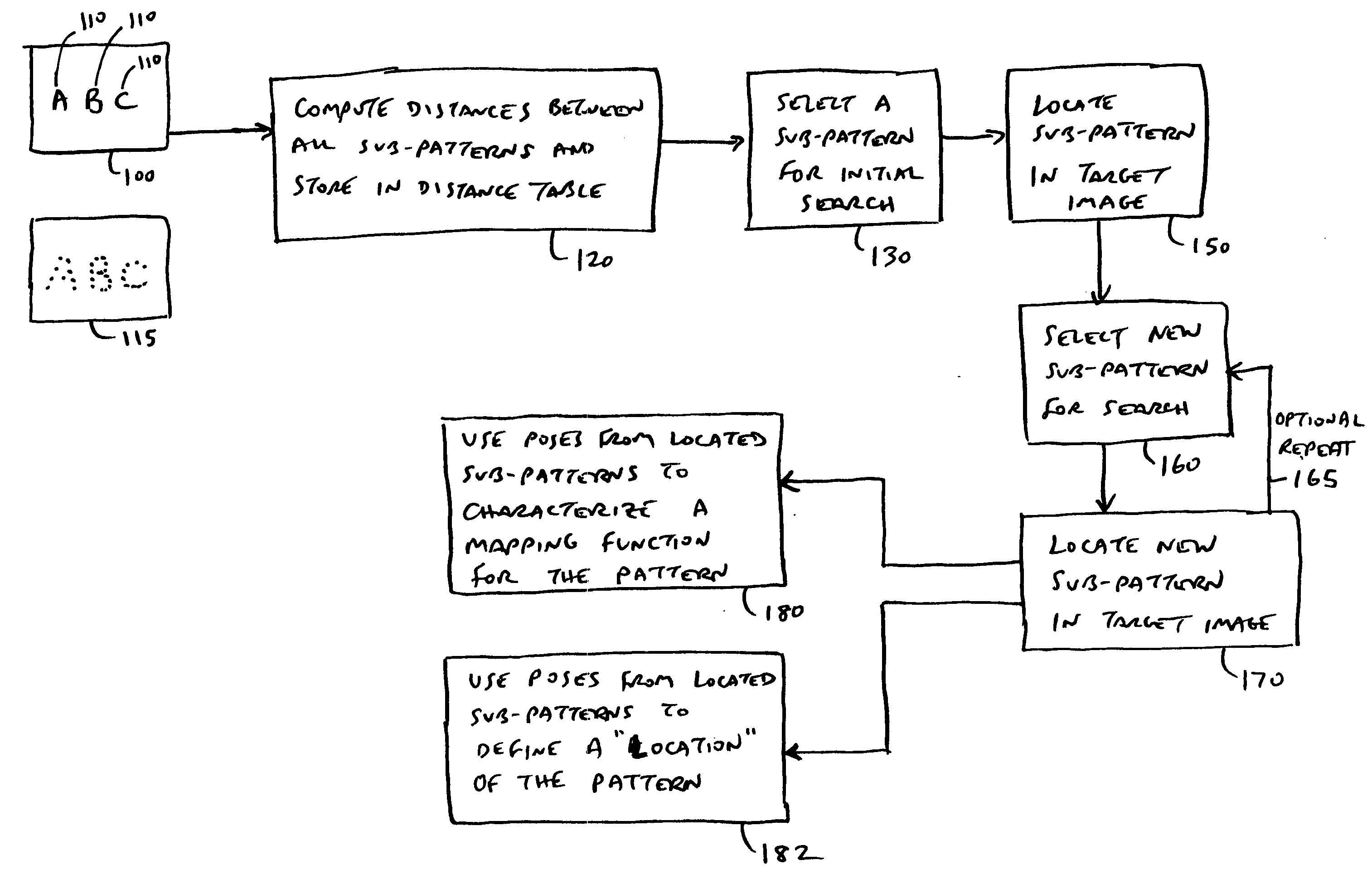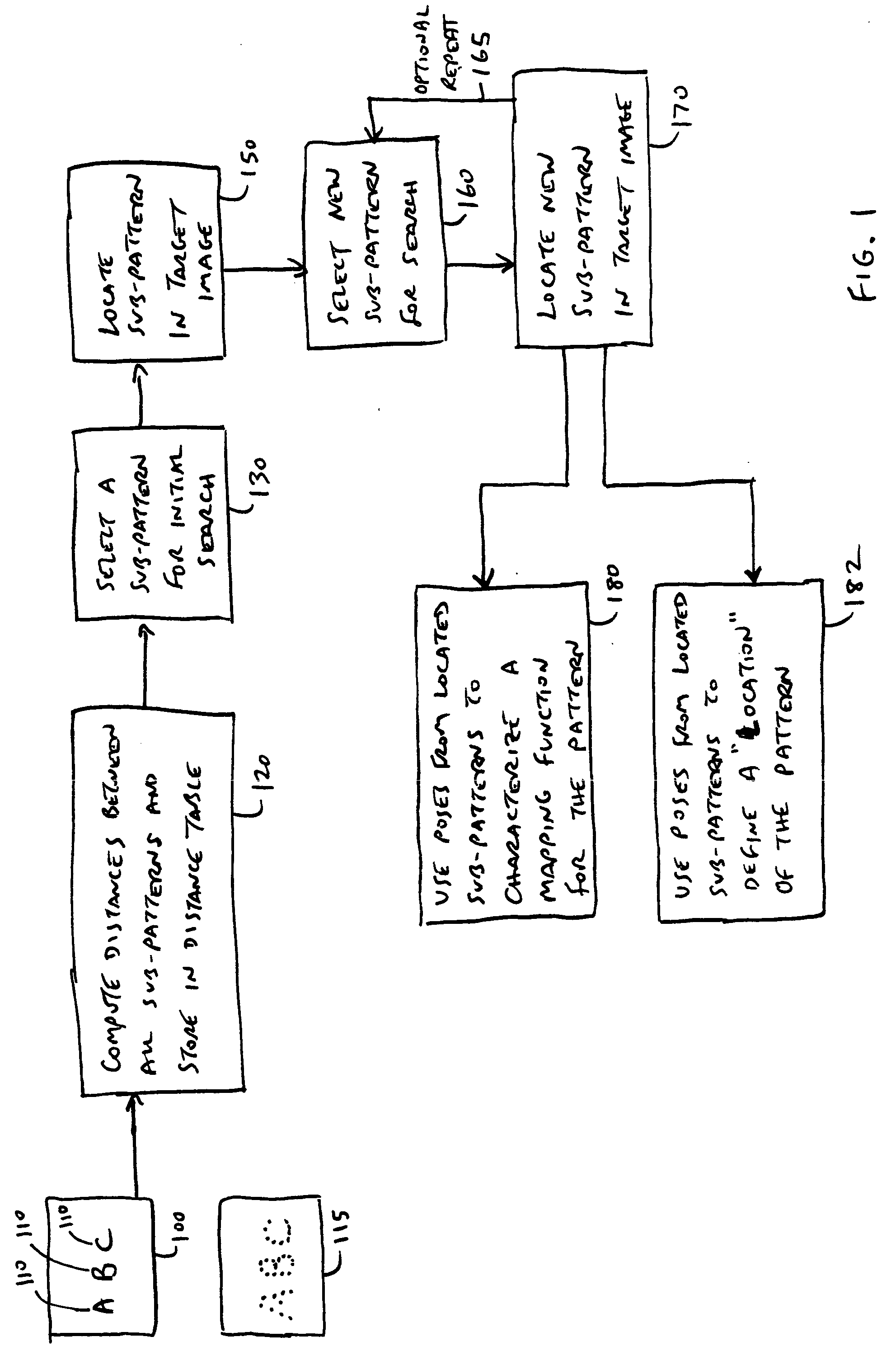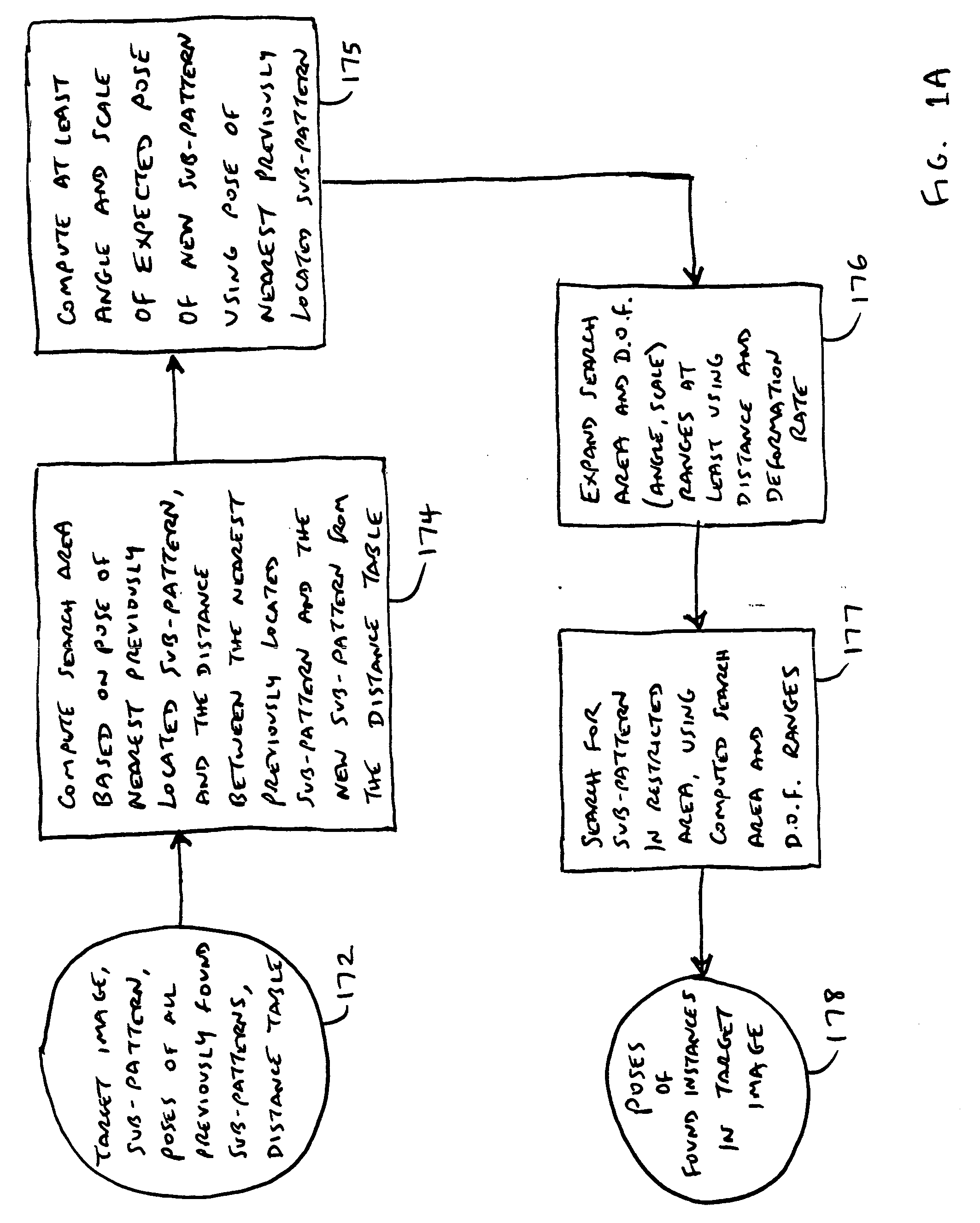Methods for finding and characterizing a deformed pattern in an image
a pattern and image technology, applied in the field of machine vision systems, can solve the problems of a large number of sub-patterns in an image, a large number of blurred patterns, and a large number of known solutions, so as to reduce the number of feature points, improve search speed, and reduce the number of spurious matches
- Summary
- Abstract
- Description
- Claims
- Application Information
AI Technical Summary
Benefits of technology
Problems solved by technology
Method used
Image
Examples
Embodiment Construction
[0048] Referring to FIGS. 1 and 2, this method takes as input a target image having a pattern to be analyzed 100 (the letters A, B, and C, taken together), which is partitioned into a set of two or more sub-patterns 110 (the letters A, B, C; individually). These sub-patterns 110 are selected to be “spatially coherent” (a coherent sub-pattern tends to contain areas of the image that are connected to each other, and tends not to contain areas that aren't connected. For example, the region of the image where the “A”, lies in FIG. 2A is connected by virtue of being part of the “A”, so that would tend to be one coherent sub-pattern, but elements of the “B” would not be included because there is a gap such as in 205 between those elements), such that each sub-pattern 110 represents a particular region of the main pattern, and together the sub-pattern regions cover the majority of the area of the larger pattern 100 where pattern information, such as boundaries between light and dark region...
PUM
 Login to View More
Login to View More Abstract
Description
Claims
Application Information
 Login to View More
Login to View More - R&D
- Intellectual Property
- Life Sciences
- Materials
- Tech Scout
- Unparalleled Data Quality
- Higher Quality Content
- 60% Fewer Hallucinations
Browse by: Latest US Patents, China's latest patents, Technical Efficacy Thesaurus, Application Domain, Technology Topic, Popular Technical Reports.
© 2025 PatSnap. All rights reserved.Legal|Privacy policy|Modern Slavery Act Transparency Statement|Sitemap|About US| Contact US: help@patsnap.com



